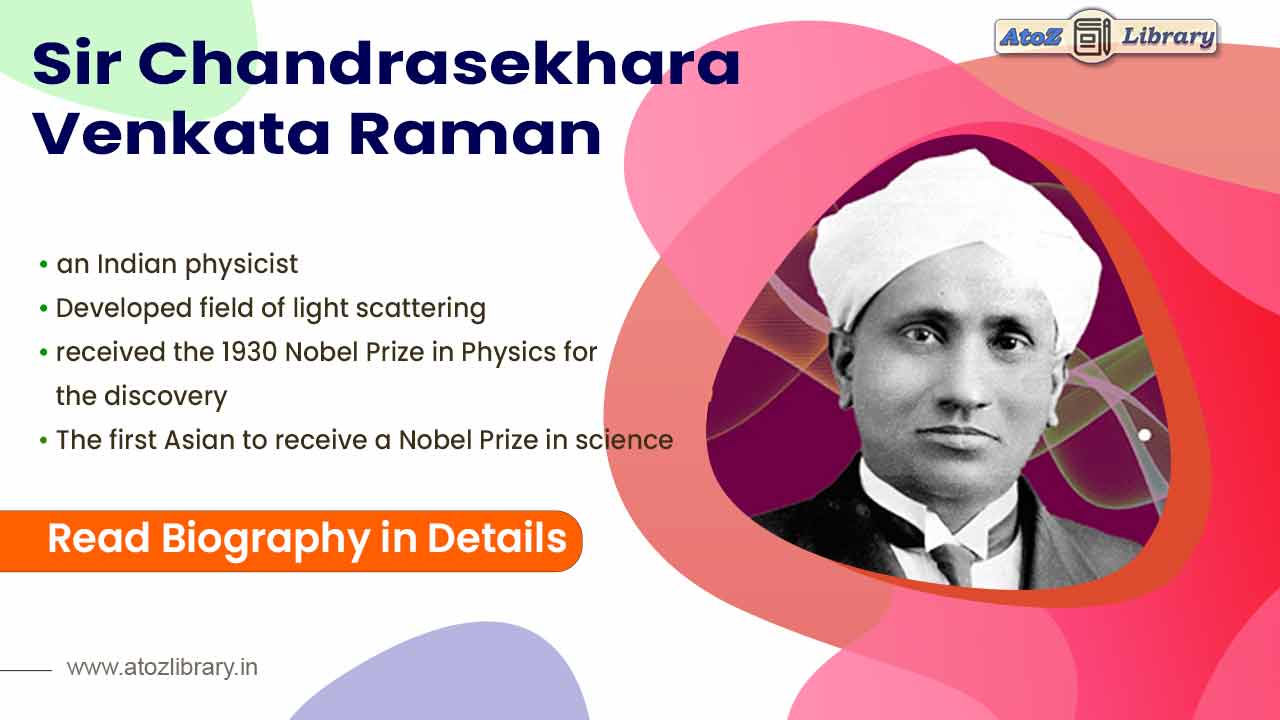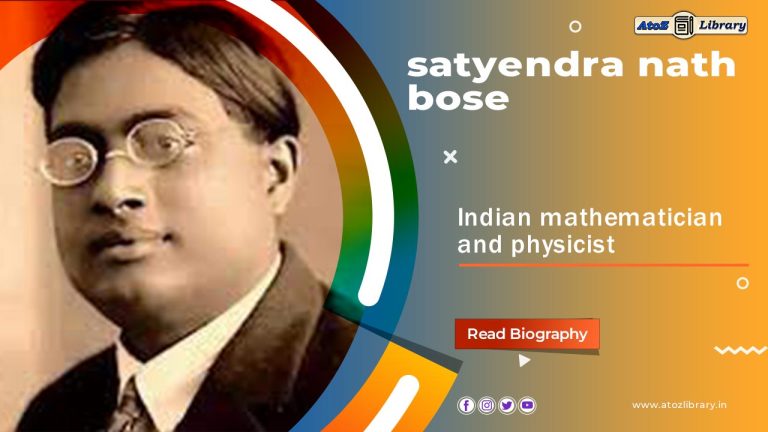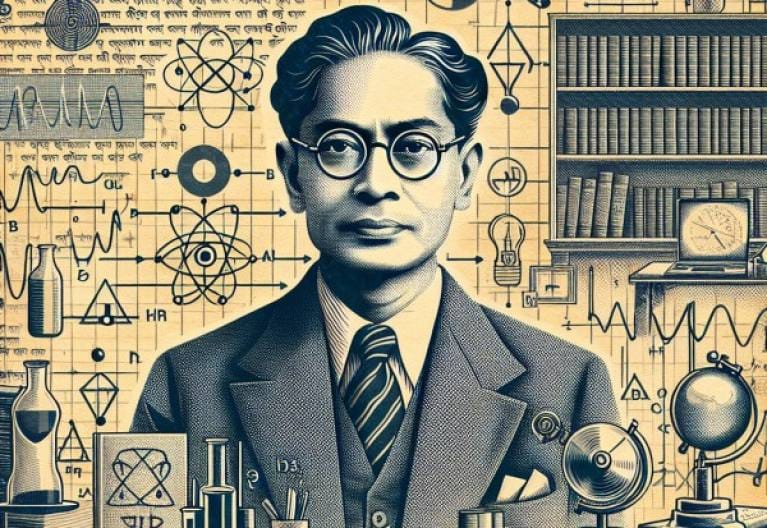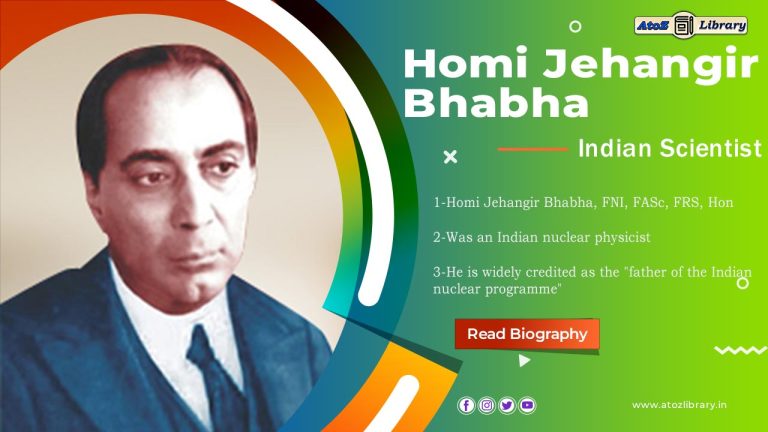Introduction
CV Raman, full name Chandrasekhara Venkata Raman, was a renowned Indian physicist who made groundbreaking contributions to the field of physics. He was born on November 7, 1888, in the city of Tiruchirappalli, in the Madras Presidency of British India (now Tamil Nadu, India).
CV Raman’s pioneering research on the scattering of light earned him the Nobel Prize in Physics in 1930, becoming the first Asian and first Indian to receive the prestigious award in science. His discovery, known as the “Raman Effect,” has since become a fundamental tool for the analysis of molecular structures in physics and chemistry.
Apart from his scientific achievements, CV Raman also held various important positions in his lifetime, including the directorship of the Indian Institute of Science in Bangalore and served as the President of the Indian Science Congress Association.
Throughout his life, he remained deeply committed to promoting scientific research and education in India, and his contributions have had a lasting impact on the scientific community worldwide. This biography will explore the life and work of this remarkable physicist, shedding light on his legacy and impact on the field of physics.
Early and education life of “CV Raman”
Chandrasekhara Venkata Raman, also known as CV Raman, was an Indian physicist who won the Nobel Prize in Physics in 1930 for his groundbreaking work on the scattering of light, now known as the “Raman Effect.” Here are some details about his early and educational life:
CV Raman was born on November 7, 1888, in the city of Tiruchirapalli in the Madras Presidency (now Tamil Nadu, India) to a Tamil-speaking Brahmin family. His father, Chandrasekhar Iyer, was a teacher of mathematics and physics, and his mother, Parvathi Ammal, was a homemaker.
CV Raman’s early education took place at home, where his father taught him the fundamentals of mathematics and physics. He also received a rigorous education in Sanskrit, a language he would later use extensively in his research.
In 1902, at the age of 13, CV Raman entered Presidency College in Madras (now Chennai) to study physics and mathematics. In 1904, he received a scholarship to study at the University of Madras, where he earned his Bachelor’s degree in Physics in 1907. He continued his studies at the same university, earning his Master’s degree in Physics in 1909.
In 1910, CV Raman was awarded a scholarship by the Indian Finance Department to study abroad. He chose to go to England, where he enrolled at the University of Cambridge to work under the supervision of J.J. Thomson, the discoverer of the electron. Raman worked on a variety of topics during his time at Cambridge, including the scattering of X-rays and the theory of diffraction.
In 1913, CV Raman returned to India and joined the faculty of the University of Calcutta as a professor of physics. He would later serve as the Director of the Indian Institute of Science in Bangalore from 1933 until his retirement in 1948.
Throughout his career, CV Raman conducted extensive research in a wide range of fields, including acoustics, optics, and crystal physics. He made numerous contributions to the study of light, sound, and matter, and his discovery of the Raman Effect remains one of the most significant scientific breakthroughs of the 20th century.
Related post:- APJ Abdul Kalam Life Story : The Missile Man Of India
CV Raman’s career as a scientist
As a scientist, CV Raman had a prolific career that spanned several decades. Here are some details about his scientific career:
After returning to India in 1913, CV Raman became a professor of physics at the University of Calcutta. He continued his research in a variety of areas, including the theory of diffraction and the scattering of light. In 1921, he discovered what is now known as the “Raman Effect,” which occurs when light is scattered by molecules and results in a change in the wavelength of the scattered light. This discovery would go on to win him the Nobel Prize in Physics in 1930.
CV Raman’s discovery of the Raman Effect propelled him to international fame, and he became one of the most renowned scientists of his time. He continued his research in a variety of areas, including acoustics, optics, and crystal physics.
In 1933, CV Raman was appointed as the Director of the Indian Institute of Science in Bangalore, a position he held until his retirement in 1948. During his tenure as Director, he oversaw the expansion and modernization of the institute and worked to establish it as a leading research institution.
CV Raman also continued to conduct research during his time as Director, and he made significant contributions to a variety of fields. In the 1940s, he conducted pioneering work on the optics of colloids and the fluorescence of diamond. He also investigated the optical properties of crystals and made important contributions to the understanding of crystal structures.
Throughout his career, CV Raman received numerous honors and awards for his scientific contributions. In addition to the Nobel Prize, he was awarded the Bharat Ratna, India’s highest civilian honor, in 1954. He also served as the President of the Indian Science Congress and the Royal Society of London. His legacy as one of the greatest scientists in Indian history continues to inspire generations of researchers and scholars.
CV Raman’s contributions to science
CV Raman made significant contributions to various fields of science throughout his career. Here are some of his major contributions:
- Raman Effect: CV Raman’s most famous contribution is the discovery of the Raman Effect in 1928. This phenomenon occurs when light is scattered by molecules, resulting in a change in the wavelength of the scattered light. This discovery opened up a new field of study in spectroscopy and has had important applications in chemistry, physics, and materials science.
- Optics of Colloids: In the 1940s, CV Raman conducted pioneering work on the optics of colloids. He investigated the scattering of light by small particles in a liquid medium and developed techniques for studying the size and shape of particles using light scattering.
- Fluorescence of Diamond: CV Raman also made significant contributions to the study of the fluorescence of diamond. He discovered that when exposed to light, diamonds emit a weak red glow, which he called “photoluminescence.” This phenomenon has important applications in gemology, as it can be used to identify and authenticate diamonds.
- Acoustics: CV Raman also made important contributions to the field of acoustics. He conducted research on the properties of sound and developed new methods for studying the transmission of sound waves through materials.
- Crystal Physics: CV Raman also studied the properties of crystals and made significant contributions to the understanding of crystal structures. He developed new techniques for studying crystal lattices using light scattering, and his work laid the foundation for the field of crystallography.
- Polarization of Light: CV Raman conducted research on the polarization of light and developed new methods for studying the phenomenon. His work helped to deepen our understanding of the properties of light and its interaction with matter.
- Spectroscopy: CV Raman was also a pioneer in the field of spectroscopy. He developed new techniques for studying the interaction of light with matter and used these techniques to make important discoveries in a variety of fields.
These are just a few of the many contributions that CV Raman made to the field of science. His work continues to inspire and inform research in a wide range of areas.
Related post:- Raja Ram Mohan Roy Biography: The founders of the Brahmo Sabha
Awards won By CV Raman
CV Raman won several awards throughout his life as a scientist. Here are some of the most significant awards and honors he received:
- Nobel Prize in Physics: In 1930, CV Raman was awarded the Nobel Prize in Physics “for his work on the scattering of light and for the discovery of the Raman Effect.” This award is one of the most prestigious in the field of science, and CV Raman was the first Asian to receive it.
- Fellow of the Royal Society: In 1924, CV Raman was elected a Fellow of the Royal Society of London, one of the oldest and most prestigious scientific societies in the world. He was the first Indian scientist to be elected to the society.
- Bharat Ratna: In 1954, CV Raman was awarded the Bharat Ratna, India’s highest civilian honor, for his contributions to science.
- Franklin Medal: In 1941, CV Raman was awarded the Franklin Medal in Physics, one of the most prestigious awards in the field.
- Hughes Medal: In 1930, CV Raman was awarded the Hughes Medal by the Royal Society of London for his work on the scattering of light.
- Padma Bhushan: In 1954, CV Raman was awarded the Padma Bhushan, one of the highest civilian awards in India, for his contributions to science.
- Knighthood: In 1929, CV Raman was knighted by the British government for his contributions to science.
These are just a few of the many awards and honors that CV Raman received throughout his life. His contributions to science continue to be celebrated and recognized to this day.
Death of CV Raman
CV Raman passed away on November 21, 1970, at the age of 82, in Bangalore, India. He had been suffering from illness for some time prior to his death. His passing was mourned by the scientific community in India and around the world, and he was widely regarded as one of the greatest scientists in the country’s history.
CV Raman’s legacy continues to live on to this day, and his contributions to science have had a lasting impact on the field. The Indian government has established a number of institutions and awards in his honor, including the Raman Research Institute in Bangalore and the CV Raman Award for Physics. His work is also celebrated in a variety of other ways, including through scientific lectures and seminars, exhibitions, and other events.
Related post:- Read In Details About Sardar Vallabhbhai Patel: The Iron Man of India
conclusion
CV Raman was a brilliant Indian physicist and scientist who made significant contributions to various fields of science, including optics, acoustics, crystal physics, and spectroscopy. His discovery of the Raman Effect in 1928 was a landmark achievement and opened up a new field of study in spectroscopy. He was the first Indian to receive the Nobel Prize in Physics in 1930, and his work continues to be celebrated and recognized to this day.
Throughout his life, CV Raman was committed to advancing science and promoting scientific research in India. He founded the Indian Academy of Sciences and the Raman Research Institute, both of which have played important roles in the development of science in India. He was also a champion of science education and worked to promote science literacy among the general public.
CV Raman’s contributions to science have had a lasting impact on the field, and his legacy continues to inspire scientists around the world. He remains one of the most celebrated and respected scientists in Indian history, and his work serves as a testament to the power of scientific inquiry and discovery.






Great weblog right here! Also your website so much up very fast!
What host aree yyou the use of? Can I am getting your associate link to your host?
I desire myy site loaded uup as fast as yours
lol